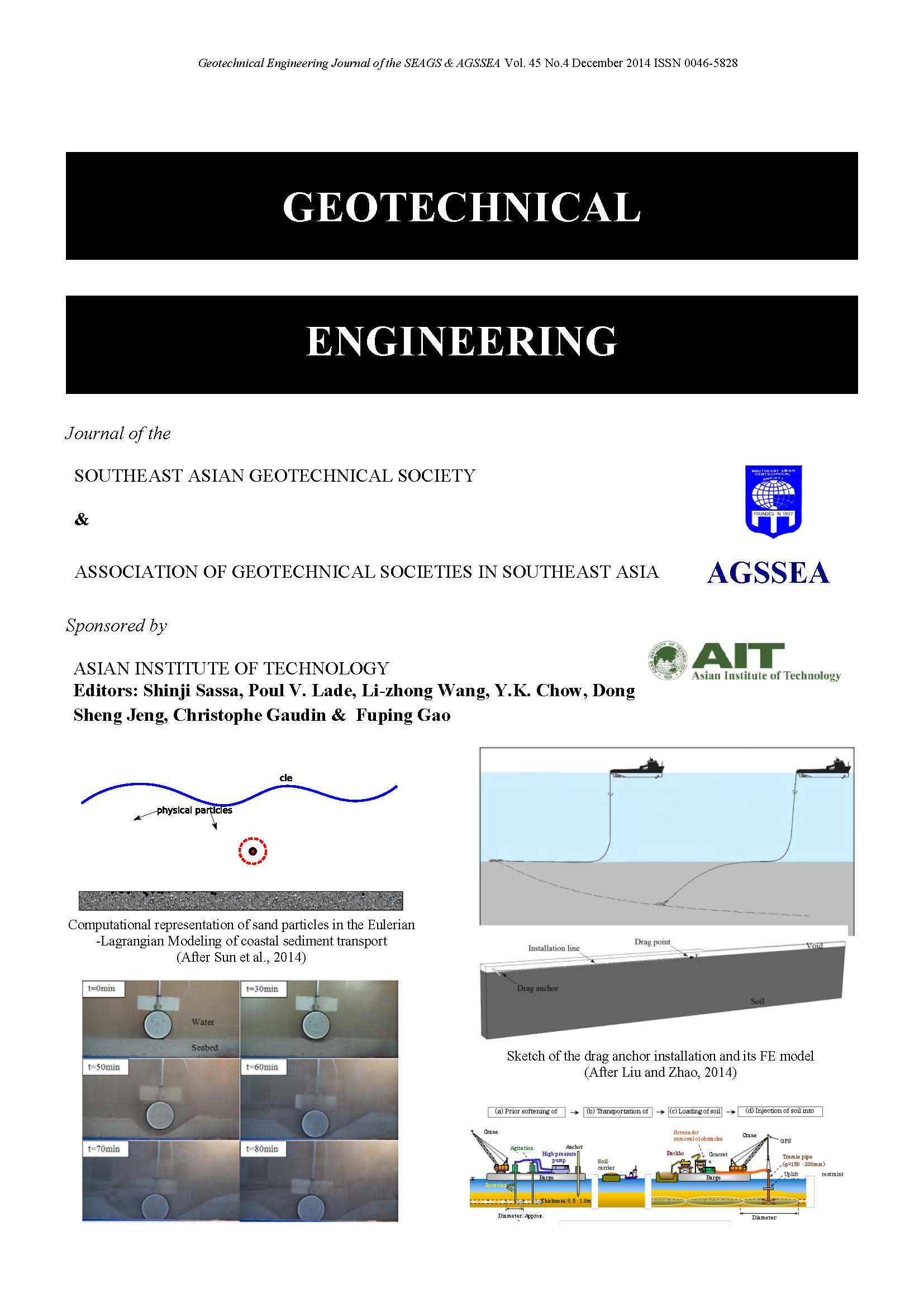Compressibility as an Indicator of Liquefaction Potential
Main Article Content
Abstract
It is difficult to impossible to obtain intact samples of loose, silty sand from coastal and offshore sandy soil deposits, which could potentially liquefy. To evaluate the liquefaction potential for such soils, a quantity that may be used as an indicator and can be measured in-situ is the volume compressibility. The more compressible the easier the soil will liquefy. Presented here is a study of three clean sands with the same geologic origin: Sile Sand 20/30, Sile Sand 50/55 and Sile Sand 80/100. Sile Sand 80/100 is also mixed with two types of non-plastic silts: TT Silt and IZ Silt. Three different fines contents of 5%, 15% and 25% are used for each of the two combinations of silty sands. Isotropic compression tests and undrained triaxial compression tests have been performed on these soils to determine their liquefaction potential and their compressibilities, and these are correlated with each other. Experiments have shown that volumetric compressibilities increase with increasing fines content for both silt types, which is similar to the observation of increasing liquefaction potential with fines content. Approximate boundaries for stable response, transition stage, and liquefaction region are determined. Accordingly, specimens with volumetric compressibility values smaller than 0.17 (1/MPa) were stable, while all specimens with volumetric compressibility values greater than 0.23 (1/MPa) liquefied. Further laboratory and in-situ tests on different sand and silt types are still needed to verify and tune those boundaries, which could potentially serve as indicators of liquefaction potential via in-situ compressibility tests.
Article Details

This work is licensed under a Creative Commons Attribution-NonCommercial-NoDerivatives 4.0 International License.
Copyright © 2019 Association of Geotechnical Societies in Southeast Asia (AGSSEA) - Southeast Asian Geotechnical Society (SEAGS).


